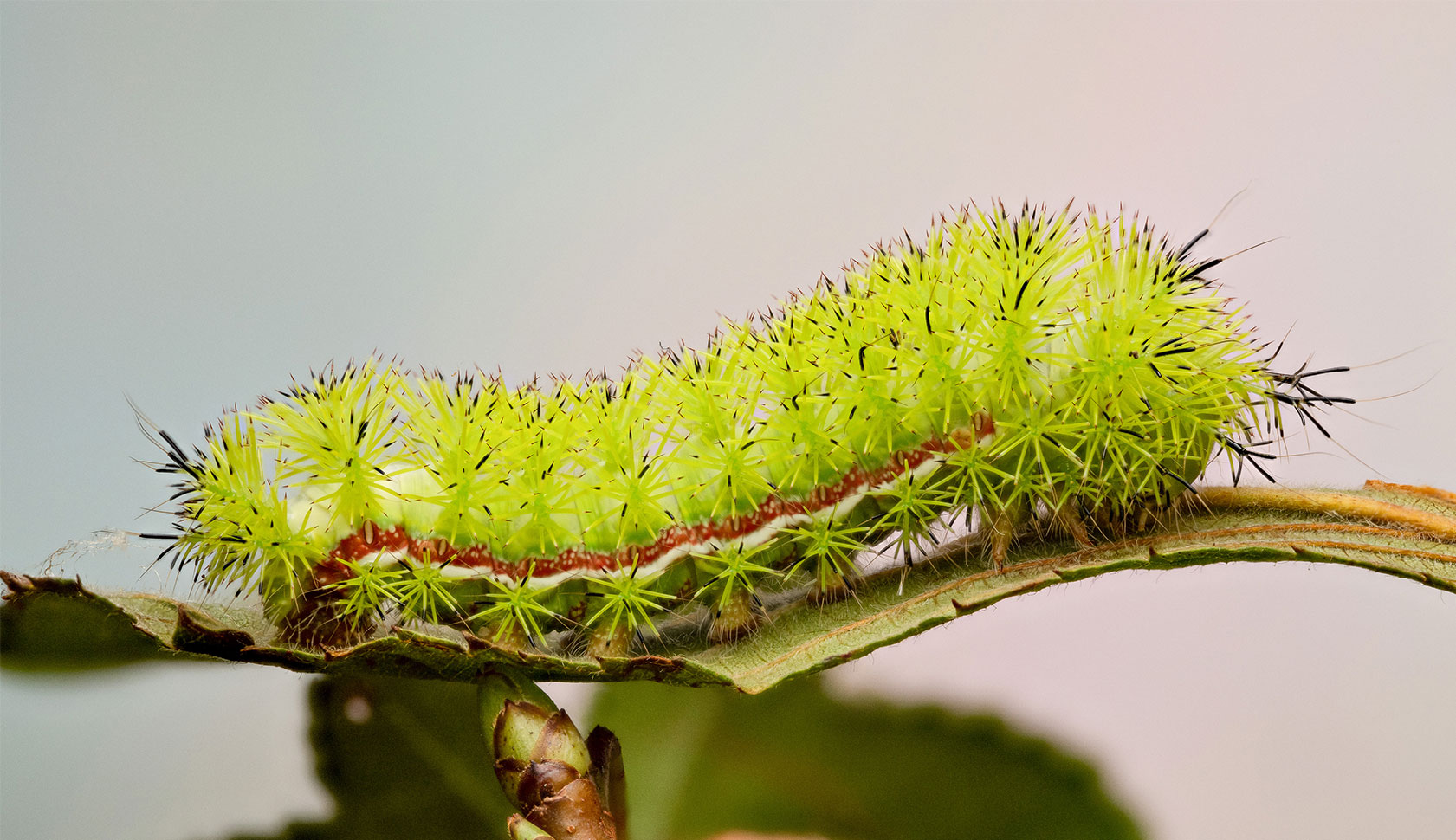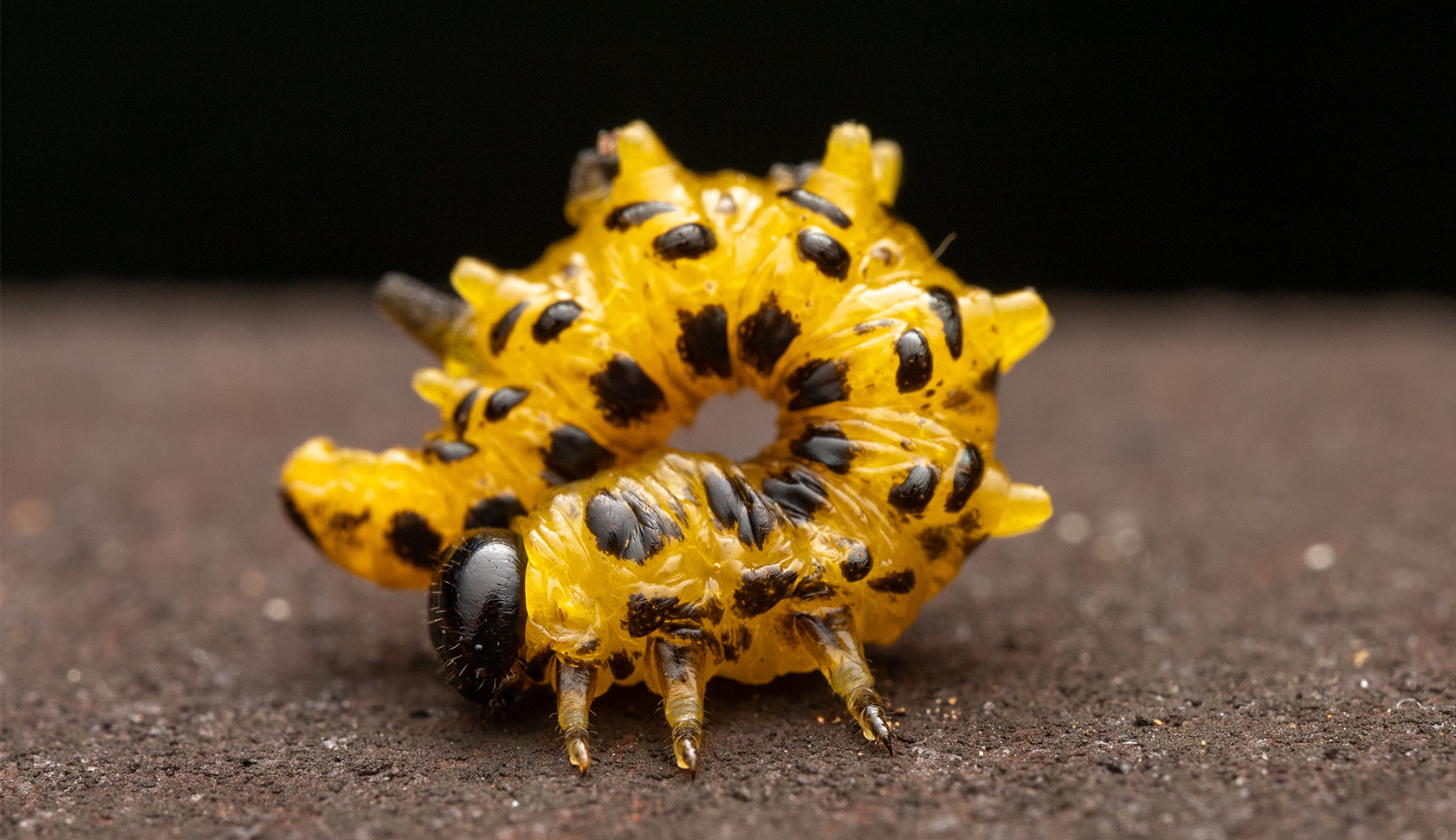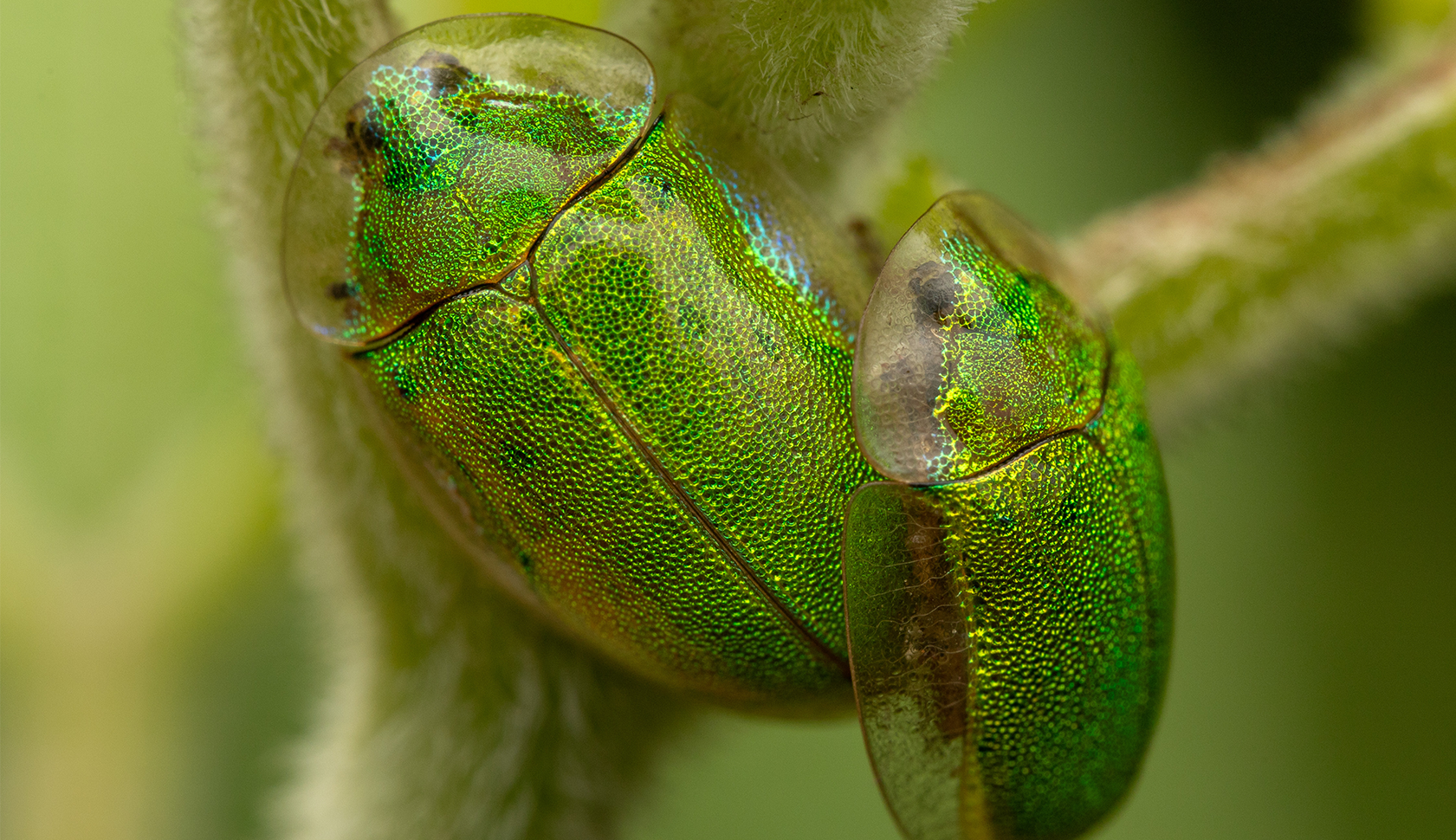When he’s not in his lab studying parasites at the University of Georgia’s Center for Tropical and Emerging Global Diseases, you can find Diego Huet around Athens parks with his camera.
He’s not snapping pictures of sunsets or creeks or anyone posing from a nearby park bench. He’s looking for the tiniest creatures he can find, hiding in plain sight on leaves and branches.
“I’ve always loved bugs and weird organisms,” said Huet, assistant professor in the College of Pharmacy. “Growing up, I would try to collect them and rear them, especially caterpillars.”
Huet’s lab focuses on the parasite Toxoplasma gondii, the causative agent of toxoplasmosis. In his research, he uses this organism to gain insights into other parasites, including those responsible for malaria and cryptosporidiosis. These are dangerous diseases that cause morbidity, mortality, and substantial economic loss worldwide.
(READ MORE: Diego Huet zeroes in on parasite that affects thousands each year)
With his camera, though, he sees the gentler parts of the outdoors.
In the past, he would use his phone to take photos of insects, but the lens couldn’t fully capture the creatures in all their glorious, tiny detail. During the COVID-19 pandemic, he decided to invest in a new camera to begin his macrophotography journey.
Fast forward four years, and Huet has posted 4,812 observations on his iNaturalist account, a social media website dedicated to identifying wildlife and plant life.



















